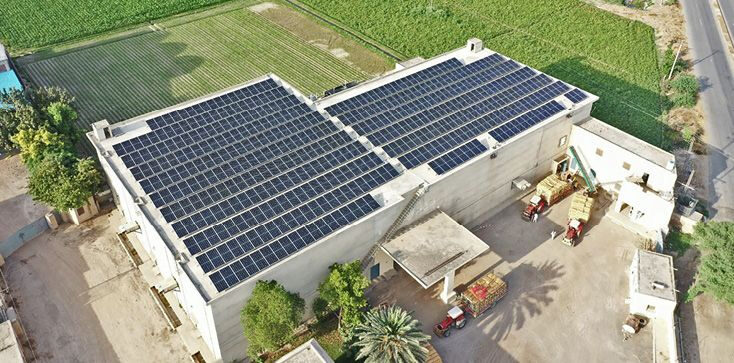Researchers at Germany’s Fraunhofer ISE have developed a hybrid bifacial high-concentration photovoltaic module (CPV) which they claim can reach a power output of up to 326 W/m2.
The module, called EyeCon, is manufactured by applying silicone-on-glass Fresnel lenses with an aperture of 47.6 mm × 47.6 mm in a 4 × 12 lens array and III‐V triple‐junction solar cells onto the front surface of p‐PERC bifacial crystalline silicon cells. “Such hybrid modules use lenses and multijunction cells to concentrate and convert direct normal irradiance (DNI) while absorbing diffuse and scattered sunlight with an integrated Si solar cell,” the scientists explained.
They also said that the module concentration ratio was raised to 321x and that the absorption of diffuse irradiation was also increased by enabling the rear side of the Si cell to absorb light hitting the glass baseplate of the module.
The silicon solar cells were interconnected and laminated through standard industrial processes, while the mounting and interconnection of the CPV solar cells were done with pick-and-place and ultrasonic heavy-wire bonding techniques.
The outdoor characterization of the module was conducted on the dual-axis solar tracker of the research institute in Freiburg, southern Germany. “We demonstrate with outdoor measurements that the power output of the bifacial EyeCon module reaches up to 326 W/m2 when the direct to global irradiance ratio is 92%,” the research group stated.
According to the scientists, the results of the experiments show that the Si cell generates between 23 and 42 W/m2 of additional power when the diffuse irradiance component increases from 8% to 30%. “This corresponds to a power increase between 7.6% and 19% over conventional CPV modules”, the researchers further explained.
The EyeCon module, described in the paper Development and outdoor characterization of a hybrid bifacial HCPV module, published in Progress in Photovoltaics, has a hybrid power output of 326 W/m2 or a bifacial efficiency of 28% calculated with the available global plus rear side irradiance.
Compared to traditional CPV modules, which only take into account the direct light, hybrid CPV modules have lower efficiencies. Their power output by area, however, is up to 19% higher because they harvest not only direct but also diffuse and rear side irradiation. Therefore, the concept achieves the highest power per square meter of any PV technology today.
This content is protected by copyright and may not be reused. If you want to cooperate with us and would like to reuse some of our content, please contact: editors@pv-magazine.com.




Very interesting